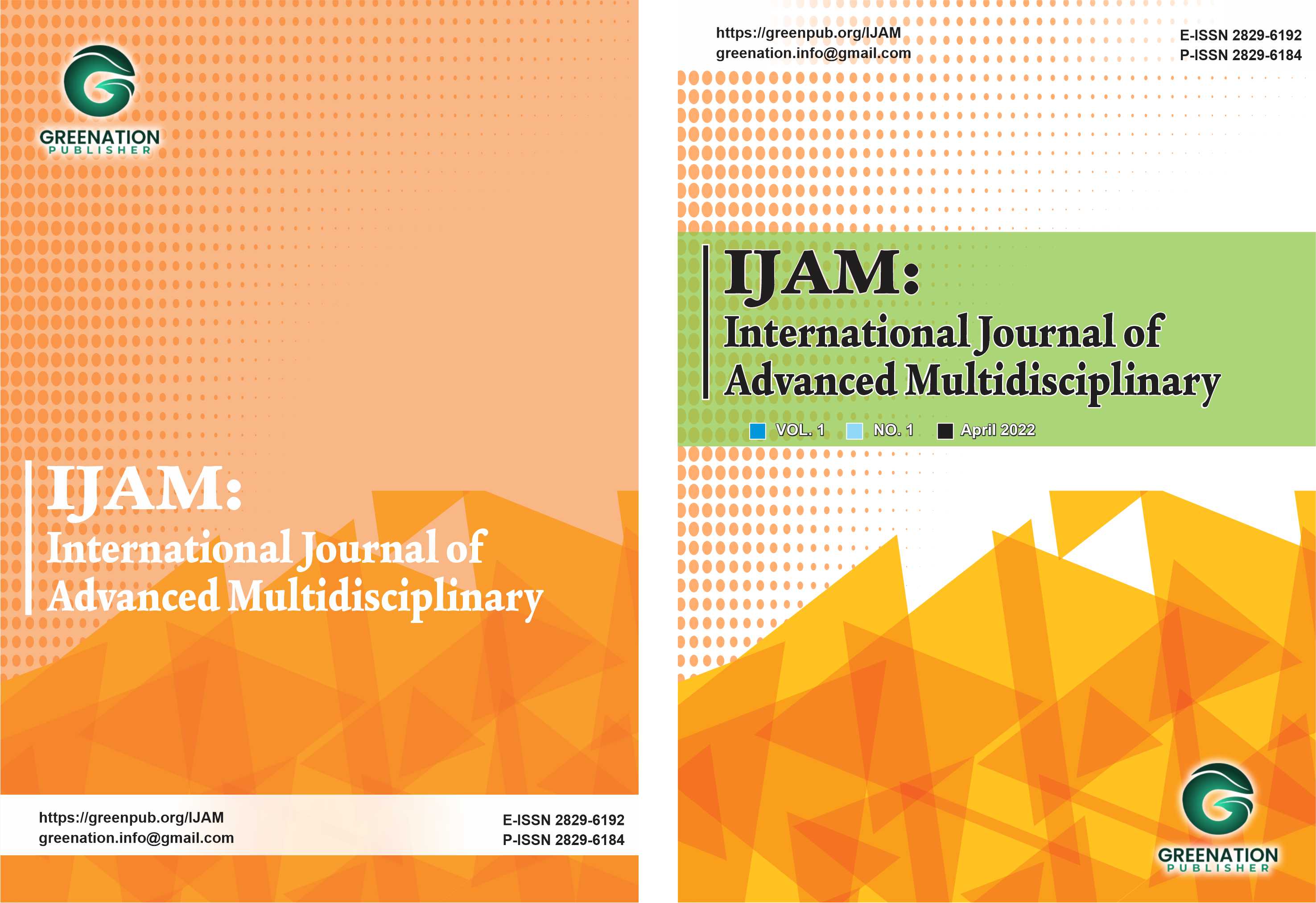Digital Marketing in Facing Business Competition in the Digital Era: A Conceptual Study as a Reference for Researchers
DOI:
https://doi.org/10.38035/ijam.v2i4.643Keywords:
Digital Marketing, Trust, Corporate ImageAbstract
The development of digital technology has significantly transformed the business competition landscape, compelling companies to adapt to more innovative and efficient strategies. Digital marketing has emerged as an effective approach to address these challenges, allowing companies to expand their market reach, enhance consumer interaction, and measure marketing performance in real-time. The application of digital marketing strategies has become an effective solution in achieving these goals. This research examines how digital marketing can be utilized to strengthen consumer trust, build a strong corporate image, and increase customer loyalty. The study consists of several sections. First, a literature review focuses on digital marketing. Second, the research model and propositions developed in this study are based on a literature review of previous research, and the relationship between digital marketing, trust, corporate image, and customer loyalty is discussed in-depth. The results of the study show that an integrated digital marketing strategy not only helps companies survive in the competition but also builds long-term relationships with customers, ultimately enhancing trust and strengthening the corporate image in the market. The proper implementation of this strategy is a key factor in business success in the digital era.
References
Aaker, D. A. (1996). Building Strong Brands. Free Press.
Afifah, A. N., & Najib, M. (2022). Digital marketing adoption and the influences towards business successes of MSMEs creative sector in Indonesia and Malaysia. Jurnal Aplikasi Manajemen, 16(3), 377-386.
Aladwani, A. M., & Palvia, P. C. (2002). Developing and validating an instrument for measuring user-perceived web quality. Information & Management, 39(6), 467-476.
Alguacil, M., García-Fernández, J., Calabuig, F., & Gálvez-Ruiz, P. (2022). How can the management of fitness centres be improved through corporate image and brand image? Economic Research-Ekonomska Istrazivanja , 35(1). https://doi.org/10.1080/1331677X.2021.1995458
Ali, H., & Limakrisna, N. (2013). Metodologi penelitian (petunjuk praktis untuk pemecahan masalah bisnis, penyusunan skripsi, tesis, dan disertasi). Deeppublish: Yogyakarta.
Ali, H. (2012). Membangun Citra Perbankan Melalui IT & CRM Untuk Meningkatkan Loyalitas Nasabah. Yogyakarta: Hasta Cipta Mandiri.
Alfian, A., & Wendrita, A. (2023). Pengaruh Citra Perusahaan Dan Lokasi Terhadap Kepuasan Nasabah Kendaraan Bermotor Pada Pt. Asuransi Bumi Putra Muda Padang. Jurnal Economina, 2(1), 241-253.
Barnes. (2009). Elemen Kepercayaan. Diambil 16 Februari 2016, dari situs World Wide Web: (http://barnes.blogspot.com/2011/04/elemen-kepercayaan.html).
Cardoso, I. D. L. M. (2023). Pengaruh Digital Marketing Terhadap Kepuasan Pelanggan Serta Implikasi Terhadap Citra Perusahaan (Studi kasus pada PT Bank Rakyat Indonesia Tbk di Indonesia) (Doctoral dissertation, Universitas Atma Jaya Yogyakarta).
Chaffey, D. & Ellis-Chadwick, F. (2019). Digital Marketing Strategy, Implementation, and Practice. 6 ed. United Kingdom: Pearson Education Limited.
Cheung, C. M. K., & Thadani, D. R. (2012). The impact of electronic word-of-mouth communication: A literature analysis and integrative model. Decision Support Systems, 54(1), 461-470.
Fawaid, A. (2017). Pengaruh digital marketing system, terhadap daya saing penjualan susu kambing etawa. IQTISHADIA Jurnal Ekonomi & Perbankan Syariah, 4(1), 104-119.
Frost, R., & Strauss, J. (2016). E-marketing. New York: Routledge.
Gamboa, A. M., & Gonçalves, H. M. (2014). Customer loyalty through social media: A customer engagement model. International Journal of Consumer Studies.
Gray, E. R., & Balmer, J. M. T. (1998). Managing Corporate Image and Corporate Reputation. Long Range Planning, 31(5). https://doi.org/10.1016/S0024-6301(98)00074-0
Indahingwati A. (2019). Kepuasan Konsumen dan Citra Institusi Kepolisian Pada Kualitas Layanan SIM Corner di Indonesia. Surabaya: CV Jakad Publishing.
Kotler, P., & Keller, K. L. (2016). Marketing Management. Pearson Education.
Keller, K. L. (2009). Building strong brands in a modern marketing communications environment. Journal of Marketing Communications, 15(2-3), 139-155.
Kennis, V., & Octavia, A. (2024). Pengaruh Digital Marketing Terhadap Kepuasan Nasabah Dengan Citra Perusahaan Sebagai Variabel Mediasi Pada Pt Bank Pembangunan Daerah Jambi Kcp Pemayung. Jurnal Manajemen Terapan dan Keuangan, 13(01), 137-151.
Kotler, P. (2008). Manajemen Pemasaran. Jakarta: PT Indeks.
Kotler, P., Kartajaya, H., Setiawan, I. (2019). Marketing 4.0 Bergerak dari. Tradisional Ke Digital. Jakarta: PT Gramedia Pustaka Utama.
Lazuardi, A. R., TS, A. R., Sudaryo, Y., & Efi, N. A. S. (2022). Analisis Penerapan Digital Marketing Terhadap Citra Perusahaan Melalui Kepuasan Nasabah Sebagai Variabel Intervening. Jurnal Ilmiah Manajemen, Ekonomi, & Akuntansi (MEA), 6(2), 1881-1899.
Li, X. G., Wang, X., & Cai, Y. J. (2011). Corporate-, product-, and user-image dimensions and purchase intentions: The mediating role of cognitive and affective attitudes. Journal of Computers, 6(9). https://doi.org/10.4304/jcp.6.9.1875-1879
Mangold, W. G., & Faulds, D. J. (2009). Social media: The new hybrid element of the promotion mix. Business Horizons, 52(4), 357-365.
Martin, K., & Murphy, P. E. (2017). The role of data privacy in marketing. Journal of the Academy of Marketing Science, 45(2), 135-155.
Mustika, S., Angreni, W., & Perwito, P. (2021). Pengaruh Digital Marketing Terhadap Citra Perusahaan Pada Pt. Pos Indonesia (Persero) Bandung 40000. Jurnal Ilmiah Manajemen, Ekonomi, & Akuntansi (MEA), 5(2), 1543-1553.
Parasuraman, A., Zeithaml, V. A., & Berry, L. L. (1985). A conceptual model of service quality and its implications for future research. Journal of Marketing, 49(4), 41-50.
Peppers, D., & Rogers, M. (2016). Managing Customer Experience and Relationships: A Strategic Framework. Wiley.
Prayitno, A. (2020). Pengertian digital marketing menurut para ahli, strategi, dan perkembangannya di indonesia. Internet: https://www. justaris. com/pengertiandigital-marketing-menurut-para-ahli-strategidan-perkembangannya-di-indonesia/,[25 Juli 2024].
Pulizzi, J. (2012). The rise of storytelling as the new marketing. Publishing Research Quarterly, 28(2), 116-123.
Purwana, D., Rahmi, R., & Aditya, S. (2017). Pemanfaatan digital marketing bagi usaha mikro, kecil, dan menengah (UMKM) di Kelurahan Malaka Sari, Duren Sawit. Jurnal Pemberdayaan Masyarakat Madani (JPMM), 1(1), 1-17.
Putra, G. B. S., Kumadji, S., & Hidayat, K. (2015). Pengaruh citra perusahaan terhadap minat berkunjung dan Keputusan Berkunjung (Survei Pada Pengunjung Taman Rekreasi PT. Selecta, Kota Batu, Jawa Timur). Brawijaya University.
Ryan, D. (2016). Understanding Digital Marketing: Marketing Strategies for Engaging the Digital Generation. Kogan Page Publishers.
Sabila, N. (2019). Pengantar belajar digital marketing. Semarang: Stekom.
Srinivasan, S. S., Anderson, R., & Ponnavolu, K. (2002). Customer loyalty in e-commerce: An exploration of its antecedents and consequences. Journal of Retailing, 78(1), 41-50.
Sugiyono. (2019). Statistika Untuk Penelitian. Bandung: Alfabeta.
Urban, G. L., Sultan, F., & Qualls, W. J. (2000). Placing trust at the center of your internet strategy. MIT Sloan Management Review, 42(1), 39.
Downloads
Published
How to Cite
Issue
Section
License
Copyright (c) 2024 Hazimi Bimaruci Hazrati Havidz

This work is licensed under a Creative Commons Attribution 4.0 International License.
Authors who publish their manuscripts in this journal agree to the following conditions:
- The copyright on each article belongs to the author(s).
- The author acknowledges that the International Journal of Advanced Multidisciplinary (IJAM) has the right to be the first to publish with a Creative Commons Attribution 4.0 International license (Attribution 4.0 International (CC BY 4.0).
- Authors can submit articles separately, arrange for the non-exclusive distribution of manuscripts that have been published in this journal into other versions (e.g., sent to the author's institutional repository, publication into books, etc.), by acknowledging that the manuscript has been published for the first time in the International Journal of Advanced Multidisciplinary (IJAM).























